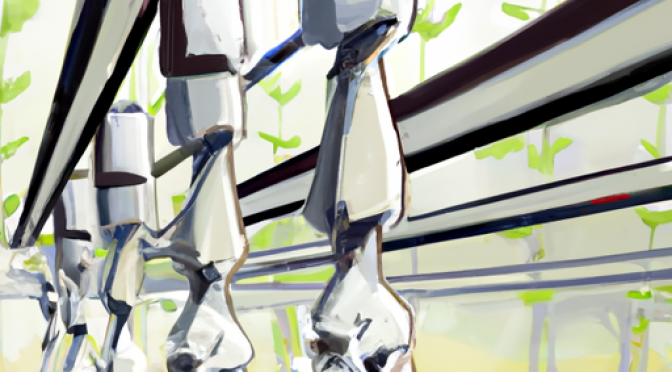Introduction
Vertical farming systems have gained significant attention in recent years due to their ability to produce high-quality crops in a controlled environment. However, the harvest process in vertical farms can be labor-intensive and time-consuming. This is where artificial intelligence (AI) tools come into play, offering innovative solutions to automate and improve the harvest process. In this article, we will explore the various ways AI tools can revolutionize vertical farming systems.
1. Crop Monitoring and Yield Prediction
AI-powered sensors and cameras can be deployed throughout the vertical farm to monitor crop growth and health. These sensors collect data on factors such as temperature, humidity, light intensity, and nutrient levels. By analyzing this data, AI algorithms can provide real-time insights into the condition of the crops, enabling farmers to make informed decisions regarding irrigation, fertilization, and pest control. Additionally, AI can predict crop yields based on historical data, allowing farmers to optimize their harvest planning and resource allocation.
2. Automated Harvesting
Traditionally, harvesting in vertical farms has been a manual process, requiring significant human labor. However, AI-powered robots equipped with computer vision technology can now autonomously identify and harvest ripe crops. These robots use advanced algorithms to analyze visual data and determine the optimal time for harvesting. By automating this labor-intensive task, AI tools not only reduce the workload for farmers but also ensure consistent and efficient harvesting, leading to higher crop yields.
3. Disease and Pest Detection
AI tools can play a crucial role in detecting and preventing diseases and pests in vertical farming systems. By analyzing images and data collected from sensors, AI algorithms can identify early signs of plant diseases or pest infestations. This early detection allows farmers to take immediate action, preventing the spread of diseases and minimizing crop losses. Moreover, AI can provide recommendations for targeted treatments, reducing the need for excessive pesticide use and promoting sustainable farming practices.
4. Optimization of Resource Utilization
AI tools can optimize resource utilization in vertical farming systems, leading to improved efficiency and reduced costs. By analyzing data on environmental conditions, crop growth patterns, and energy consumption, AI algorithms can suggest optimal settings for lighting, temperature, and irrigation. This not only ensures that crops receive the ideal conditions for growth but also minimizes energy and water wastage. By fine-tuning resource utilization, AI tools contribute to sustainable farming practices and help vertical farms achieve higher productivity.
Conclusion
Artificial intelligence tools have the potential to revolutionize the harvest process in vertical farming systems. From crop monitoring and yield prediction to automated harvesting, disease detection, and resource optimization, AI offers innovative solutions to improve efficiency, reduce labor requirements, and increase crop yields. As the technology continues to advance, integrating AI tools into vertical farming systems will become increasingly essential for sustainable and profitable agriculture.

